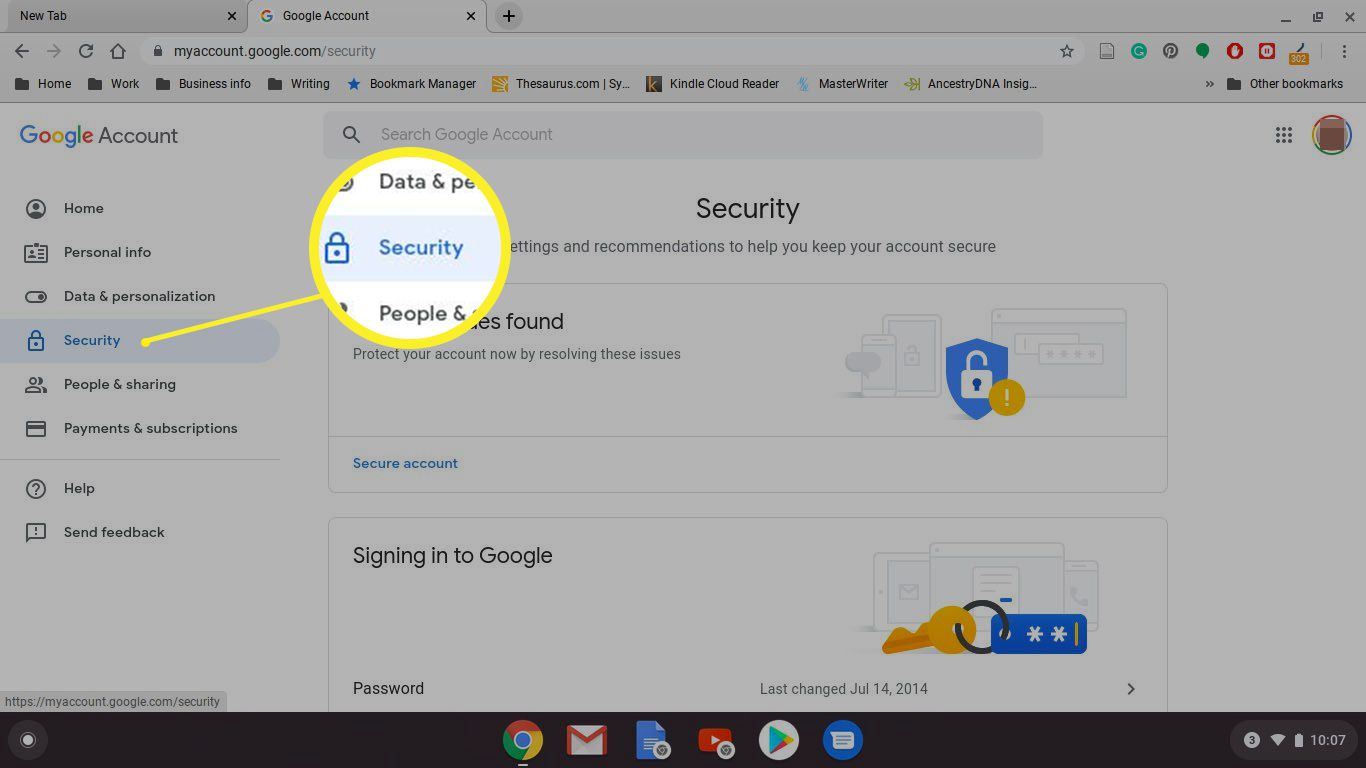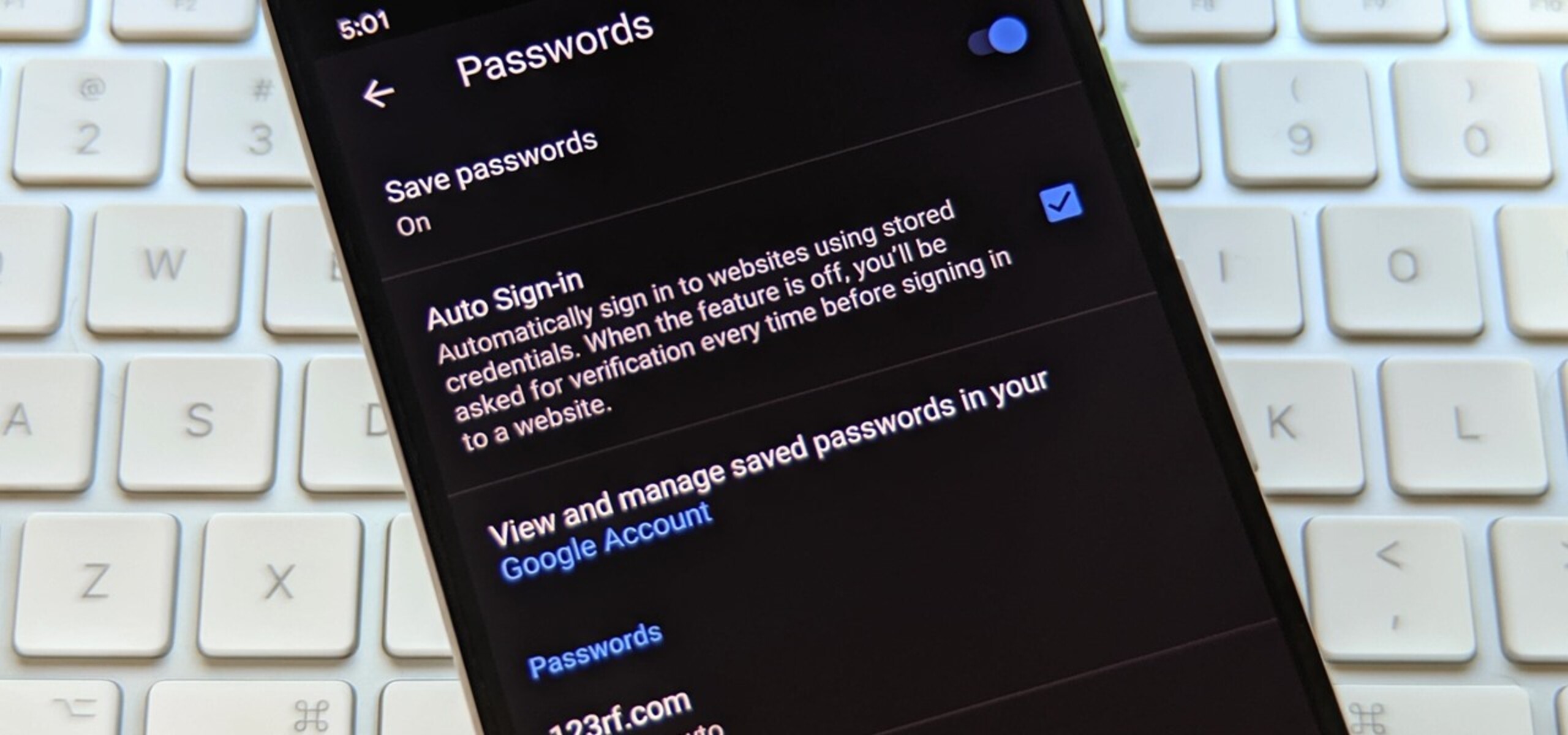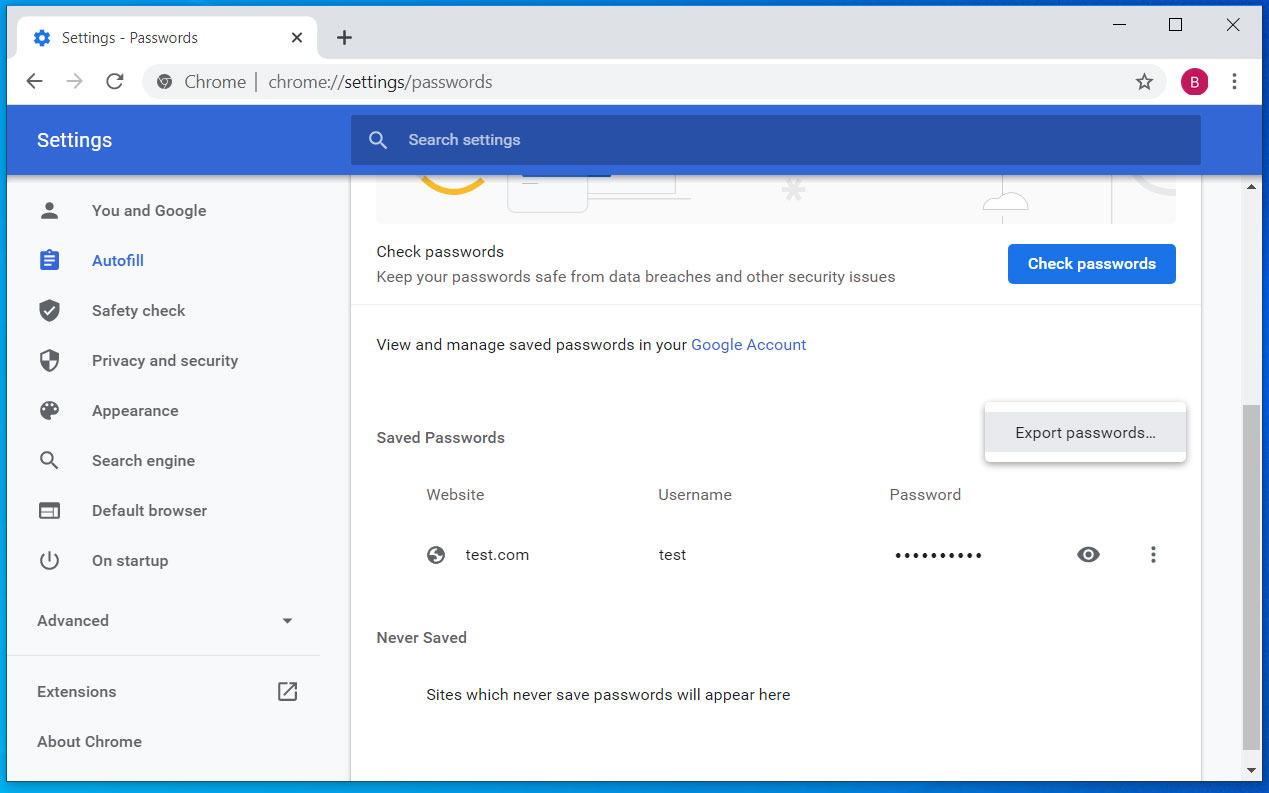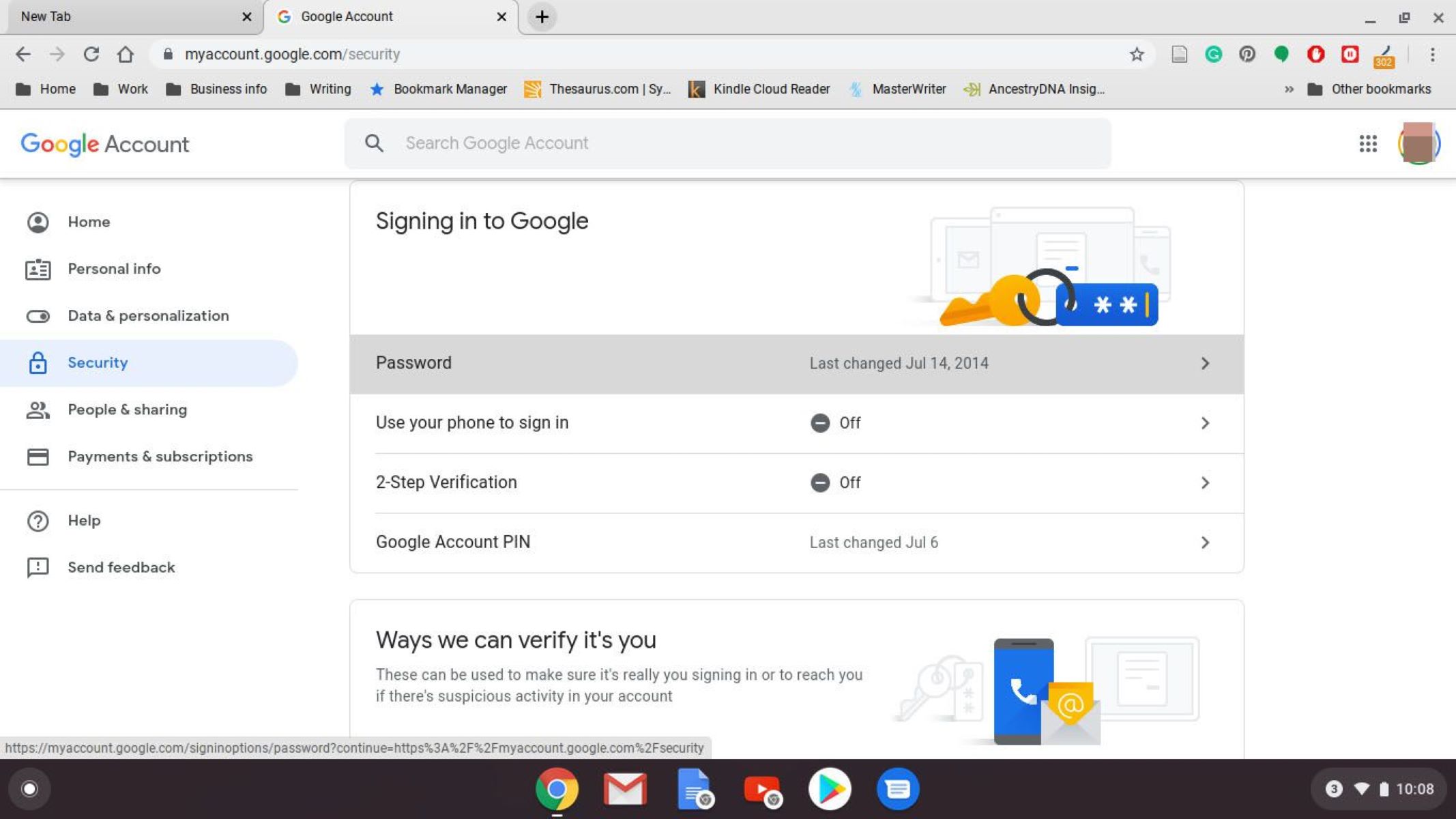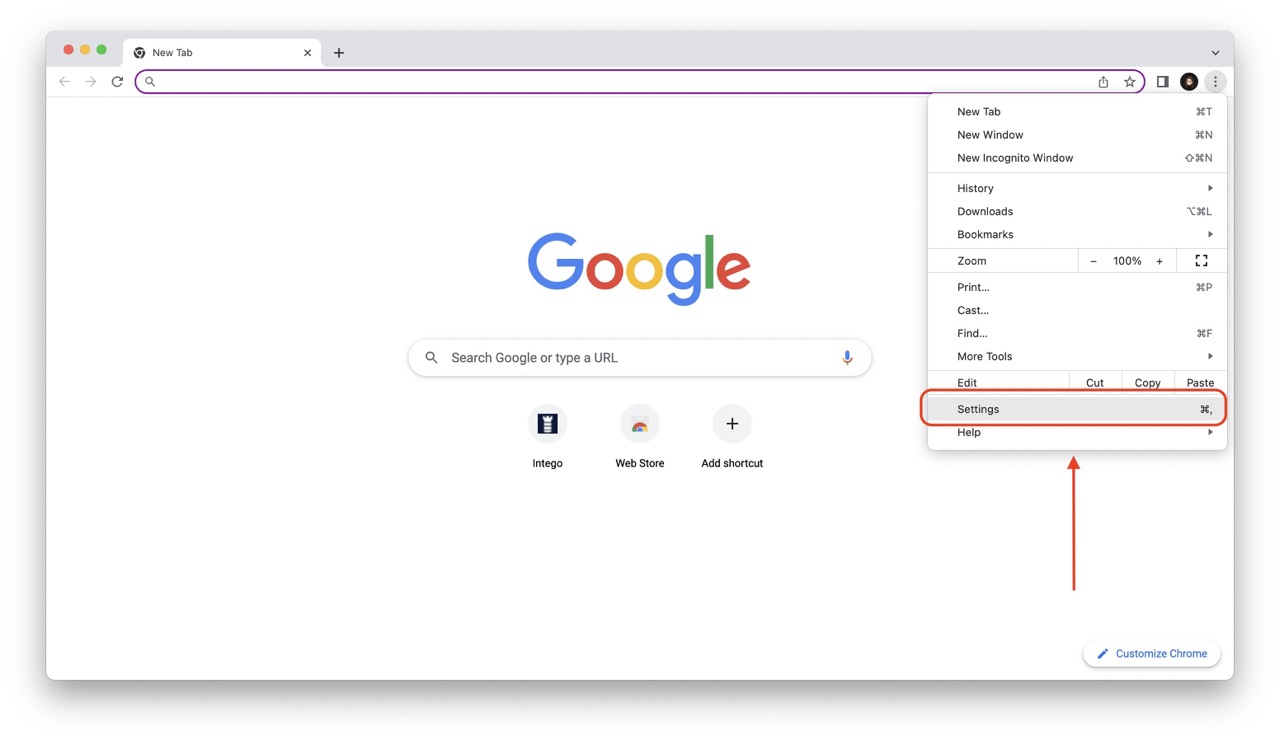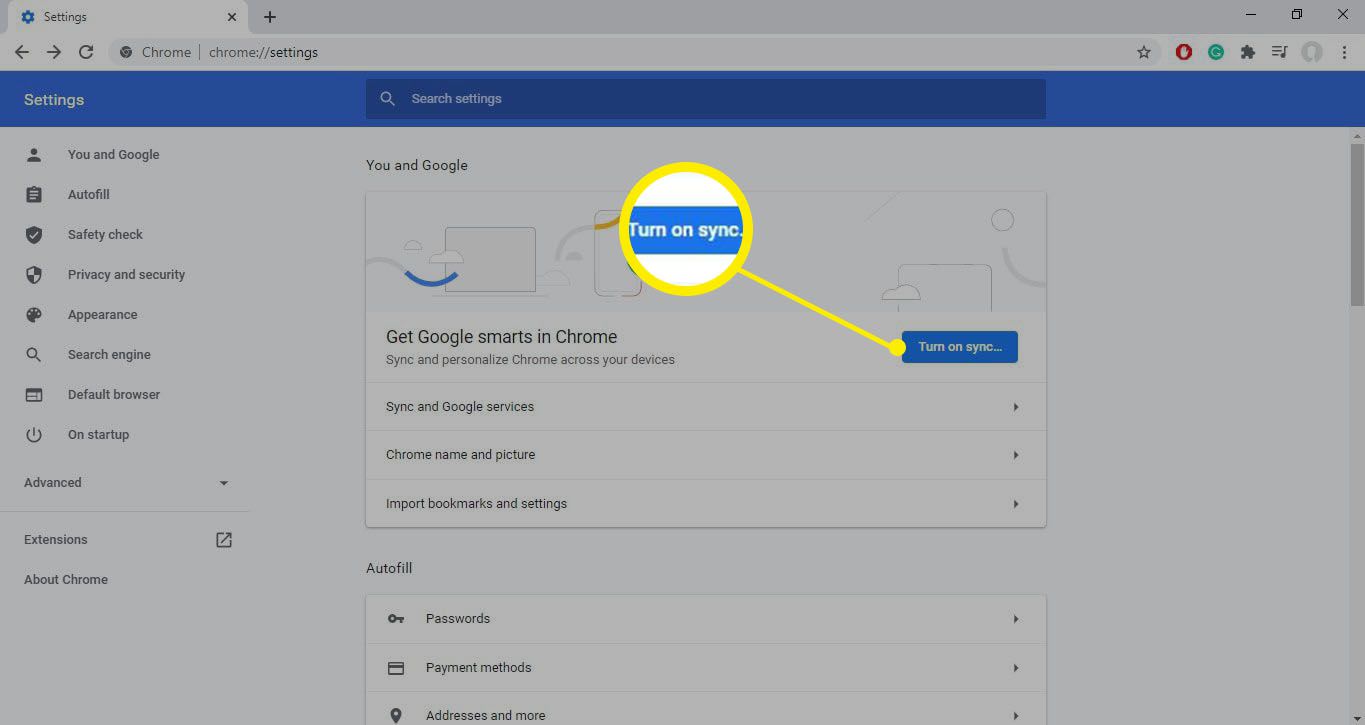Introduction
Changing your Chrome password is a crucial aspect of maintaining your online security. Whether you've recently encountered a security breach, or you simply want to update your password for precautionary measures, Chrome provides a straightforward process to help you accomplish this task. By following the steps outlined in this guide, you can ensure that your online accounts and personal information remain protected from unauthorized access.
In today's digital age, where cyber threats are increasingly prevalent, safeguarding your online accounts with strong and regularly updated passwords is paramount. Chrome, as one of the most widely used web browsers, offers a user-friendly interface for managing your passwords and making necessary changes to enhance your security posture. By understanding how to change your Chrome password, you can take proactive steps to fortify your online defenses and minimize the risk of unauthorized access to your accounts.
In the following sections, we will delve into the step-by-step process of changing your Chrome password, empowering you with the knowledge and confidence to navigate the browser's settings and implement the necessary security measures. Whether you're a seasoned Chrome user or a newcomer to the platform, this guide will equip you with the essential know-how to modify your password with ease and efficiency.
As we embark on this journey to bolster your online security, it's important to approach the process with a proactive mindset. By staying informed and proactive about managing your passwords, you can mitigate potential security vulnerabilities and maintain a resilient defense against unauthorized access to your online accounts. Let's dive into the practical steps that will enable you to change your Chrome password and reinforce the security of your digital presence.
Step 1: Open Chrome Settings
To initiate the process of changing your Chrome password, the first step is to access the browser's settings. Chrome offers a user-friendly interface that allows for seamless navigation to the settings menu, where you can manage various aspects of your browsing experience, including passwords and security settings.
Here's how you can open Chrome settings:
-
Launch Chrome: Begin by opening the Chrome browser on your computer or mobile device. You can easily identify the Chrome icon, which typically features a circular design with vibrant colors.
-
Access the Menu: Once Chrome is open, look for the three vertical dots located in the upper-right corner of the browser window. This icon represents the Chrome menu, which contains a range of options for customizing your browsing experience.
-
Click on the Menu: Upon locating the three vertical dots, click on this icon to reveal a dropdown menu. This menu serves as a gateway to various settings and features within Chrome, allowing you to tailor the browser to your preferences.
-
Navigate to Settings: Within the dropdown menu, you will find the "Settings" option, typically positioned towards the bottom of the list. Click on "Settings" to access the dedicated settings interface, where you can configure a multitude of options to suit your browsing needs.
By following these steps, you can effortlessly open Chrome settings and prepare to proceed with the subsequent steps for changing your password. The settings menu serves as a central hub for managing your browsing preferences, security settings, and other essential configurations, empowering you to maintain a personalized and secure browsing environment.
As you embark on this journey to modify your Chrome password, the process of opening Chrome settings sets the stage for seamless navigation through the browser's interface. With the settings menu at your fingertips, you are poised to delve into the next steps, where you will gain insights into managing your passwords and fortifying your online security within the Chrome ecosystem.
Step 2: Access Passwords
After successfully navigating to the Chrome settings, the next pivotal step in the process of changing your Chrome password is to access the passwords section. This critical phase allows you to delve into the realm of password management within Chrome, providing you with the means to view, edit, and update your saved passwords with ease and precision.
Here's a detailed walkthrough of how to access passwords within Chrome:
-
Navigate to the Passwords Section: Within the Chrome settings interface, locate and click on the "Passwords" option. This action will direct you to the dedicated password management section, where you can gain comprehensive insights into your saved passwords and initiate the process of modifying them.
-
View Saved Passwords: Upon accessing the passwords section, you will be presented with a list of your saved passwords, along with the associated websites or services. This overview empowers you to review your existing passwords and identify the specific credentials that you intend to update.
-
Initiate Password Modification: Within the passwords section, you can select the specific website or service for which you wish to change the password. By clicking on the respective entry, you can proceed to the next phase of modifying the password, setting the stage for enhanced security and peace of mind.
Accessing the passwords section within Chrome serves as a gateway to the realm of password management, offering you a centralized platform to oversee and refine your online credentials. By seamlessly navigating to this section, you are poised to embark on the subsequent steps, where you will delve into the intricacies of changing your Chrome password and fortifying your digital security posture.
As you progress through the process of accessing passwords within Chrome, the ability to view, edit, and update your saved credentials empowers you to maintain a proactive stance in safeguarding your online accounts. With the passwords section at your disposal, you are well-equipped to proceed to the next phase, where you will enact the necessary changes to fortify the security of your Chrome browsing experience.
Step 3: Change Password
With the groundwork laid in accessing the passwords section, the pivotal phase of changing your Chrome password unfolds. This step delves into the intricate process of modifying your existing password, empowering you to fortify the security of your online accounts within the Chrome ecosystem.
Here's a comprehensive guide on how to change your password within Chrome:
-
Select the Desired Account: Within the passwords section, identify the specific website or service for which you intend to change the password. Click on the entry corresponding to the account in question to initiate the password modification process.
-
Initiate Password Modification: Upon selecting the desired account, you will encounter the option to edit or modify the associated password. Click on the relevant action, typically denoted by an "Edit" or "Change Password" button, to proceed with the password modification process.
-
Enter Current and New Password: In the ensuing interface, you will be prompted to input your current password, followed by the new password that you wish to set for the account. Ensure that the new password adheres to robust security practices, encompassing a combination of uppercase and lowercase letters, numbers, and special characters to bolster its resilience against unauthorized access.
-
Confirm Password Change: After entering the new password, proceed to confirm the password change. This often involves re-entering the new password to validate the modification, ensuring accuracy and precision in the transition to the updated credentials.
-
Save Changes: Upon confirming the password change, finalize the process by saving the updated credentials. This action solidifies the transition to the new password, effectively replacing the previous credentials with the enhanced security of the updated password.
By meticulously following these steps, you can seamlessly navigate the process of changing your Chrome password, culminating in the reinforcement of your online security and the preservation of your digital well-being. As you embark on this transformative journey, the ability to modify your password within Chrome empowers you to proactively fortify your online defenses, fostering a resilient and secure browsing experience.
As the process of changing your Chrome password unfolds, it is essential to approach each step with attentiveness and precision, ensuring that the transition to the new password is executed seamlessly and securely. By adhering to best practices in password management and leveraging the intuitive interface of Chrome, you can navigate this phase with confidence and efficacy, safeguarding your online accounts with vigilance and foresight.
Step 4: Confirm Changes
After successfully modifying your Chrome password, the pivotal phase of confirming the changes ensues. This critical step serves as the final checkpoint in the password modification process, ensuring that the transition to the updated credentials is executed with precision and accuracy. By confirming the changes, you validate the seamless integration of the new password, fortifying the security of your online accounts within the Chrome ecosystem.
Here's a comprehensive guide on how to confirm the changes to your Chrome password:
-
Verification Prompt: Upon saving the updated password, Chrome often presents a verification prompt to confirm the successful modification. This prompt serves as a visual indicator of the password change, providing reassurance that the new credentials have been seamlessly integrated into the browser's password management system.
-
Login Validation: To further solidify the confirmation of changes, consider logging out of your current session and logging back in using the updated password. This proactive step allows you to validate the functionality of the new credentials, ensuring that they enable seamless access to your online accounts while upholding the enhanced security measures implemented through the password modification process.
-
Browser Sync: If you utilize Chrome's synchronization feature across multiple devices, confirming the changes to your password triggers the synchronization of the updated credentials across your linked devices. This synchronization mechanism ensures that the new password is seamlessly propagated to all your connected devices, fostering a cohesive and secure browsing experience across your digital ecosystem.
-
Password Manager Update: If you employ a password manager or integrated password management tools within Chrome, confirming the changes prompts the synchronization of the updated password within the password manager interface. This synchronization ensures that the new credentials are seamlessly integrated into your password management infrastructure, bolstering the cohesive management of your online accounts and passwords.
By meticulously following these steps to confirm the changes to your Chrome password, you can validate the successful transition to the updated credentials, fostering a resilient and secure browsing experience. As you navigate this phase with attentiveness and precision, the act of confirming the changes serves as a testament to your proactive approach to online security, fortifying your digital well-being with vigilance and foresight.
In essence, the process of confirming the changes to your Chrome password represents the culmination of your efforts to fortify your online security. By embracing this phase with diligence and attentiveness, you affirm the seamless integration of the new password, empowering you to navigate the digital landscape with confidence and resilience.
Conclusion
In conclusion, the process of changing your Chrome password encompasses a series of pivotal steps that culminate in the reinforcement of your online security and the preservation of your digital well-being. By navigating the intricacies of Chrome's password management interface with attentiveness and precision, you have empowered yourself to proactively fortify your online defenses, fostering a resilient and secure browsing experience.
As you reflect on the journey of modifying your Chrome password, it becomes evident that the proactive management of your online credentials is paramount in safeguarding your digital presence. The ability to seamlessly navigate the process of changing your password within Chrome underscores your commitment to upholding robust security practices, mitigating potential vulnerabilities, and fortifying the resilience of your online accounts.
By embracing best practices in password management and leveraging the intuitive interface of Chrome, you have navigated each phase of the password modification process with confidence and efficacy. From accessing the passwords section to confirming the changes, your attentiveness and foresight have played a pivotal role in fortifying the security of your online accounts, fostering a proactive stance in safeguarding your digital well-being.
Furthermore, the act of confirming the changes to your Chrome password serves as a testament to your proactive approach to online security, validating the successful transition to the updated credentials and affirming your commitment to maintaining a secure browsing environment. As you navigate the digital landscape, the seamless integration of the new password empowers you to traverse the online realm with confidence, resilience, and peace of mind.
In essence, the journey of changing your Chrome password transcends the realm of technicalities, embodying a proactive stance towards safeguarding your digital well-being. By embracing each step with diligence and attentiveness, you have fortified your online security, fostering a cohesive and secure browsing experience that resonates with vigilance and foresight.
As you embark on future endeavors within the digital sphere, the knowledge and confidence gained from this process will serve as a cornerstone in your ongoing commitment to maintaining a resilient defense against unauthorized access to your online accounts. With a proactive mindset and a steadfast dedication to robust security practices, you are well-equipped to navigate the digital landscape with confidence, resilience, and a steadfast commitment to safeguarding your digital well-being.







